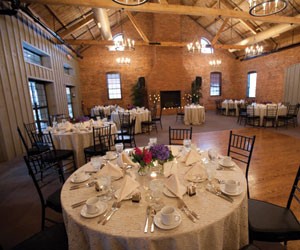With adaptive reuse one of the hottest trends in redevelopment, there are a growing number of hotels and event venues that started out as something completely different.
From railway stations to Masonic temples, these converted buildings combine the charm of the past with the latest in technology and comfort.
The Midwest has a rich assortment of reinvented places, many built when its cities were among the nation’s most important centers of industry and trade. In more recent years, some of these conversions have served as key elements of downtown revitalization projects, providing new destinations for groups to consider.
Marriott St. Louis Union Station, St. Louis
Although railway stations in several cities have been converted to hotels, none can match the grandeur of St. Louis’s Union Station. When it opened in 1894, it was the busiest train station in the world, reaching its zenith during the 1940s when more than 100,000 passengers passed through each day. Designed after Carcassonne, a walled, medieval city in southern France, Union Station is one of the most important landmarks in a city with many to choose from.
After railway service to the station stopped in 1978, the building underwent a $350 million renovation—one of the largest in U.S. history—and reopened in the early 1980s as a hotel. Its Grand Hall, the former station waiting room and now the hotel’s lobby and lounge area, has sweeping archways, gold leaf detailing and a Tiffany stained-glass window.
Today the 539-room hotel, which is adjacent to a complex with over 85 restaurants and shops, includes 67 rooms from the original railway hotel, along with the original restaurant. Among its meeting facilities are the 16,000-square-foot grand ballroom and another 8,000-square-foot ballroom.
"You can blend history and beauty and functionality into one facility," says Carrie Sheridan, the hotel’s director of sales and marketing. "We have 11 acres of heated and cooled space under one roof and a multiuse entertainment complex."
Inn at St. Johns, Plymouth, Michigan
What began in the late 1940s as St. John’s Provincial Seminary and later became a youth and family center, is now the 118-room Inn at St. John’s. Although no longer a religious institution, the heart of the property is the original seminary building and chapel.
"Our chapel is stunning," said Tonya Johnson, the property’s director of sales ad marketing. "The entire building is pretty amazing. It’s granite, limestone and slate and it would be so expensive to duplicate a building like this today. The ceilings are hand-painted with gold detailing, and all the rooms have exterior windows and lots of light. You feel like you’re at a resort."
Located halfway between downtown Detroit and Ann Arbor, St. John’s Inn attracts university meetings as well as automotive and health care companies, among other corporate groups. The property’s conference center, located in the original seminary building, consists of 48,000 square feet of meeting space, including four ballrooms, the largest of which is the 7,000 square-foot former gymnasium. Another ballroom was the seminary’s dining room and still another, the library. The property also includes a 27-hole golf course.
Temple for the Performing Arts, Des Moines, Iowa
The Temple for the Performing Arts began life as the Des Moines Masonic Temple in 1913. An elaborate five-story edifice that takes up a quarter of a downtown block, it immediately became one of the city’s grandest and most important buildings.
Although it served the Masons well over the years, times changed and downtown Des Moines gradually became deserted after dark. As buildings all around it were slated for the wrecking ball in the late 1990s, the Masonic Temple survived thanks to a developer who was able to raise funding to restore the building. After an $8 million renovation, it reopened in 2002 as the Temple for the Performing Arts.
"The Grand Ballroom is the crown jewel of downtown," says Chris Diebel, director of marketing for Orchestrate Hospitality, which operates the building. "It has marble pillars and stained-glass insets in the ceiling, and the recital hall has beautiful stained-glass windows."
The Grand Ballroom accommodates up to 450 people. A balcony with vintage theater seating provides an additional 80 seats.
Judy Jacobs grew up in St. Louis and has been writing for travel publications for over 20 years.






